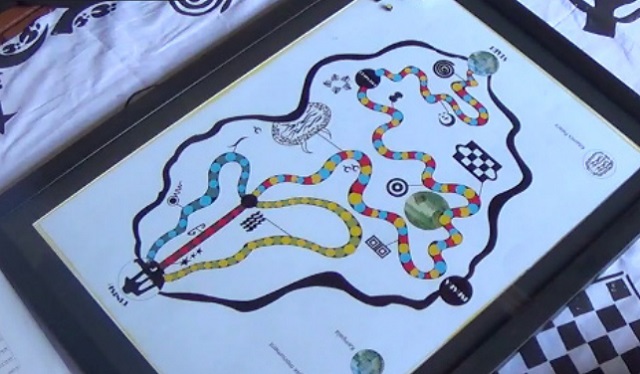
Students integrate research, collaboration and innovation into art production
| DOMINIC MUWANGUZI |Unlike the idea of leaners getting confined in the classroom and dwelling on theoretical approaches of art learning or perceiving the notion of field study as simply a form of escape from the predictable university environment, the recent excursion undertaken by a group of third year students of Margaret Trowell School of Industrial and Fine Art ( MSTIFA), overturned such perception.
The art students took a study trip to diverse communities across Uganda, but particular interest was focused on in south western Uganda because of its unique cultural sites.
As such, the learners were tasked to approach these cultural sites such as Kitagata hot springs and Biharwe Monument within the framework of research, integration and innovation and collaboration. The result of such cultural expedition is a display of multi-disciplinary art at the Makerere Art gallery that has been lauded by many art pundits as a well- researched and collaborative art exhibition.
With hindsight to the practical understanding of intricate elements and principles of art making reflected in the paintings on show that were inspired by the spotlight effect advanced by Michelangelo Caravaggio, the Italian Modernist painter (1571-1610); where darkness became the central subject in the painting; the students delved into the theme of integrating the already existing historical material into their art with an adept awareness of innovation: creating art from the found and not the imported materials.
This technique injected an element of originality in the artwork, conspiring to its uniqueness and provoking conversations around the art. For example, the central artwork in the exhibition that is displayed as an interactive installation may easily evoke the image of Omweso (Board game), with different parties playing the game, but is a reflection of the students attempt at innovation.
Omuzano installation combines three aspects including knowledge interpretation, innovation and collaboration. The artwork was made by a group of student-artists and through its interactive scheme- where a player is asked a question or set of questions-the learner is tasked to remember what they learnt or experienced during the field study.
Another noteworthy approach is visible in the installation of ceramics propped up on a dais. The ceramist used water collected from the Kitagata hot springs to sculpt functional objects like Vase, Shield and Pot. In so doing, the artist was passing on the spiritual water famous for healing to communities outside the Kitagata community. This replication approach is visible also in the Biharwe monument installation Obulamu Bunyuma. The artists’ deliberate choice of miniature cow drawings made from cardboard paper dangling in mid- air, illustrates the Biharwe incident of 1520 AD where Bunyoro was defeated by Nkore after an eclipse appeared on Biharwe hill. Gripped with fright the fleeing Bunyoro fighters, abandoning their loot including thousands of cows, claimed that it was the Bachwezi gods’ apparition that had come to the rescue of the Nkore people. In response, the Nkore people believe until this day that the cows were an offer from their gods who saved them.
Umasking history is a successful attempt to juxtapose cultural archives with art while provoking critical conservations on the essentiality of research to the subject of contemporary art. Like previous exhibitions mounted at the art gallery, the art exhibit by students seeks to lure students into the discipline of research in order to produce art that is both relevant and original to the public. This approach dismisses the traditional norm of art production where art exists for art sake and not for cultural and social benefits.
****
The exhibition is showing now at Makerere Art gallery throughout the month of December – January 2020.
 The Independent Uganda: You get the Truth we Pay the Price
The Independent Uganda: You get the Truth we Pay the Price


